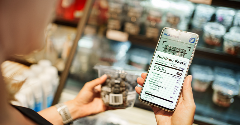News
Consumer Misgivings Could Derail Caramel Colours
12 Nov 2015John George, Ingredients Analyst See John George Speak at Day 0 ‘Natural Colour and Colouring Foods 2015’ at Fi Europe -http://www.figlobal.com/fieurope/conference/day0
Caramel’s status as the biggest contributor to the 621,000-tonne global natural colours market is undisputed, with the ingredient’s success based on its affordability and stability in a wide variety of conditions. This makes caramel ideal for incorporation into the huge range of products that want to achieve an attractive brown colour. While the ingredient’s ubiquity is not in doubt, its natural status is questionable and concerns over the formation of carcinogenic by-products incaramel production remain. The potential for consumer unrest could force manufacturers to look elsewhere, resulting in the current elevated levels of caramel consumption falling.
Cola carbonates and pet food drive demand
While the addition of caramel is common to many products, it is particularly abundant in cola carbonates, where it provides a desirable brown hue, and in dog and cat food, to colour the meat or gravy. To put into context caramel’s dominance of the natural colours market, it is worth noting that cola carbonates and dog and cat food are the two biggest consumers of natural colours and together accounted for over 70% of global use in 2014, with the majority of this being caramel colours. Going forward, caramel consumption is threatened by the decline of cola carbonates in developed markets; however increased uptake in emerging markets should mean that overall global consumption of caramel continues to grow. This is reflected in the forecast global CAGR of 0.8% for natural colours in cola carbonates from 2014 to 2019.
Natural Colour Use in Selected Product Categories (2009 – 2014)

Source: Euromonitor International
A not-so-natural colour?
With combined global natural colour consumption in cola carbonates and pet food forecast at almost 480,000 tonnes in 2019, suppliers could think the future of caramel is safeguarded. However, this couldbe threatened by questions over caramel’s natural status. The controversy surrounds class II to IV caramels, which are made by heating carbohydrates with sulphite or ammonium compounds. Detractors claim that the chemical processing involved renders these caramels artificial, and oppose manufacturers labelling products containing these caramels as “all natural”. As consumers become increasingly knowledgeable about the ingredients in their foods, acceptance of caramel may fall, pressurising manufacturers into reformulating. The perception of caramel already seems to be shifting, with Subway including caramel colours in a pledge made to remove artificial colours from American products earlier this month. This mirrors a similar move from Panera Bread last month, and is a worry for suppliers, which might reasonably fear that other companies will follow, and unofficially reclassify caramel as an artificial ingredient.
4-MEI tarnishes consumer opinion
The debate over caramel’s naturalness may be less detrimental in indulgent products like cola carbonates. A bigger threat is 4-methylimidazole (4-MEI), a by-product formed when producing class III and class IV caramels, and a possible carcinogen. In 2011, 4-MEI was added to California’s Proposition 65 list of carcinogens, meaning products that caused exposure to exceed 29 micrograms per day had to carry a warning label. This led to several soft drinks companies taking steps to reduce the 4-MEI content of their products and so avoid this labelling. However, in 2014 Pepsi came under fire after a study found that products sold in California were exceeding the limit for 4-MEI and not carrying a label. This has brought more unwanted attention upon caramel and raised consumer alarm over inclusion of the ingredient. This may force manufacturers to reconsider using class III and IV caramels, despite both the FDA and the EFSA advising that the current levels of 4-MEI in food and beverage products do not represent a risk.
Manufacturers need to weigh up the benefits of caramel, in terms of cost and stability, against the possibility of a consumer backlash if they continue to use the colour. For some products the best compromise may be to use class I caramel, which does not contain 4-MEI and is not chemically modified like other caramel variants. When use of class I caramel is not possible or in instances where manufacturers want to remove caramel entirely, natural colour suppliers have an opportunity to provide a replacement. Sensient has shown the way by extending its range of vegetable juice-derived natural brown colours, and with potentially huge volumes being needed, other suppliers would be wise to follow suit.
John George, Ingredients Analyst, Euromonitor
Find out more:
http://blog.euromonitor.com/category/ingredients
http://go.euromonitor.com/Passport-DemoRequest.html

Related news

Has ‘clean’ had its day?
22 Dec 2025
Wielding clean-label positioning and fortification as marketing levers is a dangerous strategy, and brands would be better off explaining the hows and whys of the ingredients in their products, say experts.
Read more
Celebrating the winners of the Fi Europe Innovation Awards 2025
3 Dec 2025
Food industry stakeholders celebrated as the winners of the Fi Europe Innovation Awards were announced at a ceremony in Paris.
Read more
Alternative protein startups pivot to B2B ingredients amid funding shift
27 Nov 2025
Alt protein startups are pivoting from consumer meat analogues to high-value B2B ingredients, driven by stronger investor interest, better margins, and clearer commercial pathways.
Read more
Walmart Marketplace’s record growth prompts search for UK sellers
26 Sep 2025
Walmart’s third-party e-commerce platform, Marketplace, has witnessed extraordinary growth – but a need for more product diversity has prompted the retailer to recruit UK sellers.
Read more
The winners of Vitafoods Europe Startup Challenge 2025 revealed
29 May 2025
Four startups – Yomio Drops, PFx Biotech, Revobiom, and Favamole – took top prizes at this year’s Vitafoods Europe Startup Challenge awards.
Read more
East takes on West in the fight for future food flavours
30 Apr 2025
Asian and South American flavours are now key components on global menus, driven by a growing global appetite for culinary mashups.
Read more
Food companies urged to bring ‘joy’ and urgency to healthy food mission
14 Mar 2025
For too long, businesses have treated health and sustainability as separate agendas – but there is growing evidence to show diets that benefit human health can also enhance that of the planet, say experts.
Read more
Entries open for inaugural Vitafoods Europe Innovation Awards
29 Jan 2025
Entries are open for the inaugural Vitafoods Europe Innovation Awards, celebrating the ingredients, finished products, partnerships, and initiatives redefining the nutraceutical landscape.
Read more
Paris Olympics: Food and beverage brands champion health, fun, and sustainability
5 Aug 2024
Food and beverage brands are aligning with the Paris Olympics 2024 Food Vision, which emphasises sustainability, local sourcing, and plant-based diets.
Read more
Natural Remedies: Bringing health and happiness via validated branded ingredients
18 Apr 2024
Natural Remedies is an internationally renowned botanical healthcare company committed to advancing the field through rigorous research and the development of clinically validated Branded Ingredients. Guided by our foundational principle of ‘BEING USEF...
Read more